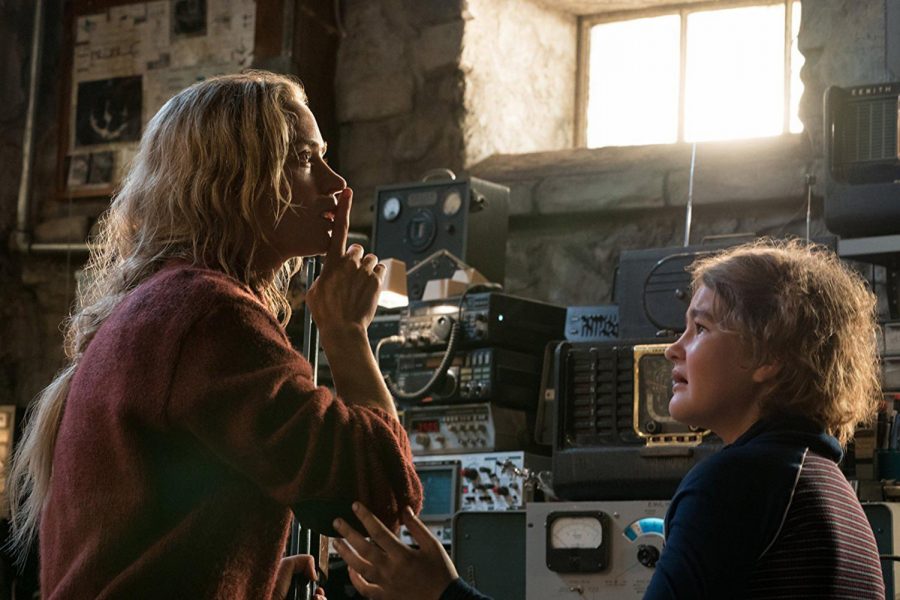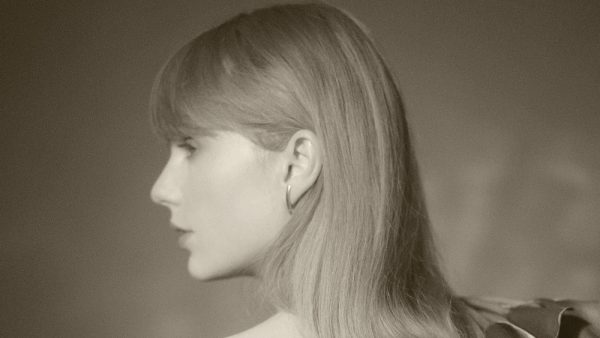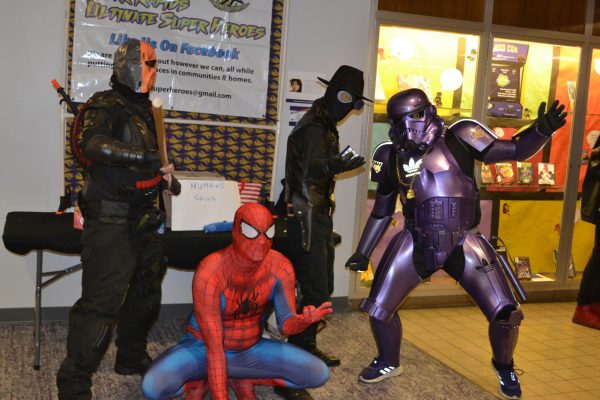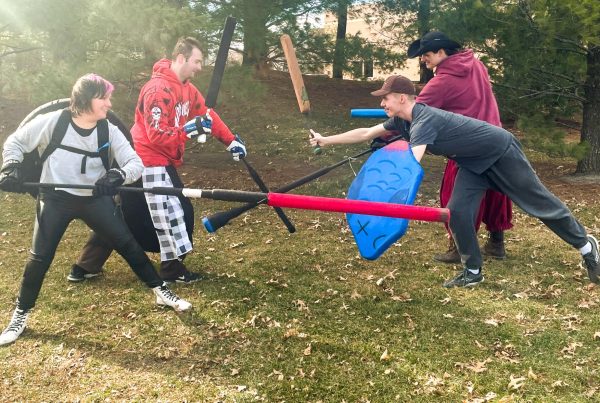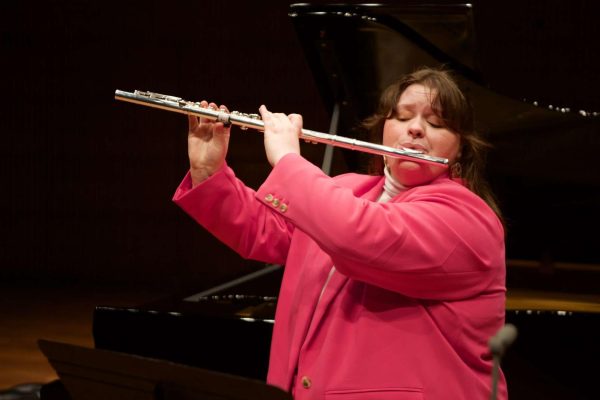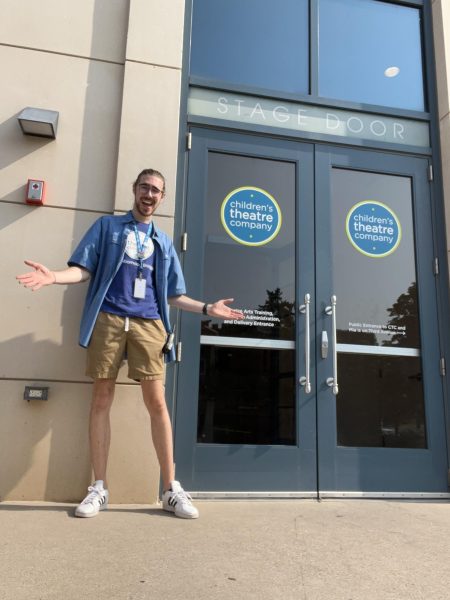New horror flick silently shocks
John Krasinski, actor and director of “A Quiet Place,” has reached his artistic turning point, according to NI film critic Clinton Olsasky. The film has a 96 percent approval rating on Rotten Tomatoes.
Apr 12, 2018
The deafening silence that courses throughout the new horror film “A Quiet Place” is at once terrifying and spellbinding — resulting in an unapologetically unique cinematic experience that is likely to stay with you long after you leave the theater.
Set in the year 2020, the film follows a single family as they struggle to survive amidst an untold number of bloodthirsty creatures. The monsters, which are sightless, primarily hunt by sound and, as a result, our protagonists are forced to live in complete silence in order to survive.
Taking the concept of “less is more” to the extreme, “A Quiet Place” fully invests in its largely silent approach to narrative, eschewing nearly all spoken dialogue.
This decision to purposefully impose such narrative constraints ultimately allows “A Quiet Place” to rise above tired horror genre clichés, elevating an otherwise formulaic post-apocalyptic survival film to a riveting, albeit flawed, piece of experimental filmmaking.
Directing: 4/5
Although “A Quiet Place” already marks John Krasinki’s third film as director, it certainly feels like an artistic turning point for the former Jim Halpert of “The Office” fame.
Krasinski lends surprisingly adept direction to “A Quiet Place,” imbuing the film with a refreshingly sophisticated visual framework that is rarely seen in modern-day horror movies.
To be sure, Krasinski’s mise-en-scene is often characterized by richly textured environments and subtly diffused natural lighting, foregrounded by extreme close-ups of his principal actors.
Unfortunately, Krasinski’s camera regularly relies too heavily on static compositional framing, as well as an overabundance of rack focus visual transitions, during the many moments of stillness highlighted in the film.
Now, while such framing does, in fact, properly situate the film into a mood of quiet tension, many of the film’s longer intervals of silent character building would have undoubtedly benefited from a greater degree of variable framing and internally motivated camera movement.
Still, Krasinski’s acute attention to detail certainly makes up for this slight lack of framing variance.
In particular, the emphasis on natural light and on-location shooting may be the film’s greatest strength in terms of visual composition, helping bring Krasinski’s post-apocalyptic world to life through a deft blend of natural beauty and fantastical horror.
Writing: 3/5
“A Quiet Place” may lay claim to one of the most unconventional screenplays to come out of a major motion picture studio in recent years.
The aforementioned lack of nearly all spoken dialogue serves as a necessary limitation for the screenplay’s co-writers to explore the emotional and psychological underpinnings of their characters through purely visual means.
With that being said, the film’s largely silent screenplay does suffer from several instances of painfully predictable foreshadowing that sadly detracts from its otherwise strong and inventive approach to storytelling.
In addition, “A Quiet Place” features an excess of glaring plot holes that often distract from the carefully crafted tension building on screen.
Whether it be a conveniently placed field of perfectly planted corn, an inexplicable abundance of electricity (with no utility bill in sight) or a nonsensical sequence consisting of physics-defying silo swimming, “A Quiet Place” simply expects too much from its viewers when it comes to suspension of disbelief — even for horror movie standards.
Acting: 4/5
The minimalist aesthetics of “A Quiet Place” can be felt in both the film’s severe lack of spoken dialogue and its intentionally miniscule cast.
Indeed, “A Quiet Place” features virtually no secondary characters outside of the family led by Evelyn Abbott (Emily Blunt) and her husband Lee (John Krasinski).
Fortunately, each of the four principal actors that comprise the Abbott family offer startlingly affecting performances, proving themselves to be more than capable to carry the emotional core of the film through their heartrending interactions with each other.
Blunt is particularly memorable as Evelyn, the family’s fearless matriarch. Blunt effortlessly conveys an extraordinarily broad range of emotions, from unfathomable fear to immeasurable love.
Krasinski, on the other hand, is believable as the family’s provider and protector but often fails to push himself to darker territory the way that his female counterpart does. Still, Krasinski’s performance is impressive if, for nothing else, his ability to convey so much with so little.
Meanwhile, both Millicent Simmonds and Noah Jupe deliver commendable performances as the family’s young children. Although occasionally hampered by moments of overacting, the two child actors are largely impeccable in their small, yet extremely integral, roles.
Finally, it should once again be noted that because of the lack of spoken dialogue, the actors in the film are forced to rely heavily on body language, facial expressions and even American Sign Language to convey their emotions — making their respective performances all the more impressive.
Overall: 3.5/5
“A Quiet Place” is an entertaining survivalist picture that largely overcomes its ostensibly one-note horror genre trappings thanks to an innovative narrative structure.
Beyond some admittedly distracting moments of flawed storytelling execution, the film mainly succeeds at crafting a satisfying reinvention of the horror genre that cleverly positions the sound of silence as the most horrifying sound of all.

